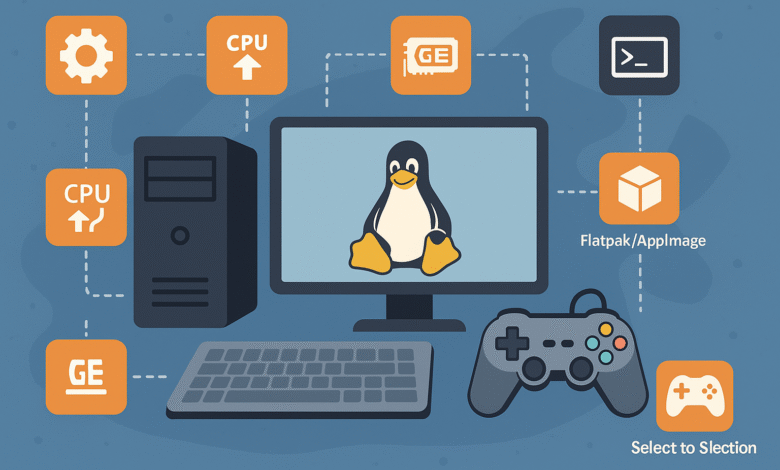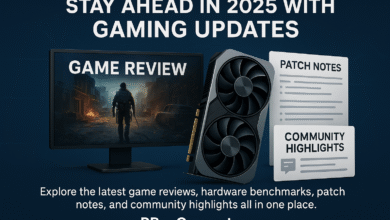Boost Your Linux Gaming: Top Tech Hacks PBlinuxgaming Users Must Try

Linux has emerged as a serious gaming platform over the last few years, thanks to ongoing development and community support. For PBlinuxgaming users especially, optimizing performance is critical to achieving the best possible gaming experience. Whether you’re facing issues like low frame rates, system lag, or hardware incompatibility, there are several powerful tweaks you can apply to improve performance dramatically.
In this guide, we’ll dive into essential tech hacks pblinuxgaming users should know to get the most out of their Linux gaming setup—covering everything from system tuning to advanced compatibility solutions.
Table of Contents
Toggle1. Switch to a Lightweight Desktop Environment
One of the most straightforward performance tweaks is opting for a lightweight desktop environment. Heavy environments like KDE Plasma or GNOME consume valuable system resources that games need. Instead, PBlinuxgaming users can switch to XFCE, LXQt, or even minimalist options like Openbox. These use less CPU and RAM, freeing up power for your games.
Implementing this one tech hacks pblinuxgaming step can make a noticeable difference, especially on systems with modest specifications.
2. Set CPU Governor to “Performance” Mode
Many Linux systems default to a power-saving CPU governor, which limits CPU performance during gameplay. By setting your CPU to “performance” mode, you ensure maximum processing power is dedicated to your games.
You can set this manually or use tools like auto-cpufreq or TLP to automate it. This is especially helpful for laptops where thermal efficiency is key. It’s one of the most crucial tech hacks pblinuxgaming users can use to improve frame rates.
3. Use Official GPU Drivers
Gaming performance on Linux hinges significantly on the correct installation of your GPU drivers. Whether you’re using an AMD or NVIDIA card, it’s vital to install the official or proprietary drivers suited for your hardware.
Check to ensure your system isn’t falling back to software rendering (like llvmpipe), which can drastically reduce performance. Correct GPU configuration is a foundational step for all tech hacks pblinuxgaming optimizations.
4. Use Kernel Parameters to Reduce Input Lag
If you’re a competitive or fast-paced gamer, reducing input lag can be a game-changer. By adding specific kernel parameters like threadirqs and nohz=off to your bootloader configuration, you can make your system more responsive.
This tech hacks pblinuxgaming method is for advanced users, so always back up your settings before making kernel-level changes.
5. Install Proton-GE for Better Game Compatibility
Steam’s Proton layer allows many Windows-only games to run on Linux. But the standard Proton version may not always deliver the best experience. Enter Proton-GE—a community-built version that offers better compatibility, patches, and performance improvements.
Using tools like ProtonUp-Qt, you can easily install and manage Proton-GE versions. For tech hacks pblinuxgaming enthusiasts, Proton-GE often resolves game crashes, sound problems, and input issues without needing major system changes.
6. Use Flatpak or AppImage for Clean Game Installs
Installing game-related tools through Flatpak or AppImage ensures isolation from your core system, reducing compatibility problems. Steam, Lutris, and other game launchers run more reliably this way, avoiding conflicts with system libraries.
These packaging formats are especially helpful for tech hacks pblinuxgaming users who value stability and clean installations.
7. Leverage GameMode, MangoHud, and GOverlay
Linux gaming tools like GameMode, MangoHud, and GOverlay allow fine-tuned control and monitoring of your system:
-
GameMode: Automatically tweaks system performance settings while gaming.
-
MangoHud: Displays live stats such as FPS, CPU/GPU usage, and temperature.
-
GOverlay: A graphical front-end for configuring MangoHud.
Combined, these tools give tech hacks pblinuxgaming users a powerful advantage for real-time diagnostics and adjustments.
8. Enable AMD FSR for High Performance on Low-End GPUs
AMD’s FidelityFX Super Resolution (FSR) upscaling tech allows games to run at higher frame rates with minimal quality sacrifice. It’s supported by many titles and can be enabled directly through game settings or Steam launch options.
Pairing FSR with GameMode and Proton-GE creates a robust performance stack for tech hacks pblinuxgaming setups on older or mid-tier machines.
9. Pick the Right Linux Distribution
Not all Linux distributions are created equal when it comes to gaming. Some are specifically designed to reduce setup time and optimize performance:
-
Pop!_OS: Ideal for NVIDIA users with ready-to-go drivers.
-
Manjaro: Great rolling release model and hardware detection.
-
Ubuntu GamePack: Comes preloaded with game-related software.
-
SteamOS: Perfect for those heavily invested in the Steam ecosystem.
Choosing a distro designed for gaming helps tech hacks pblinuxgaming users avoid compatibility headaches.
10. Regularly Maintain and Back Up Your System
Optimizations won’t mean much if your system is unstable or bloated with leftover files. Regular maintenance ensures continued performance:
-
Clear cache and temp files regularly.
-
Update your system and drivers often.
-
Use backup tools like
rsyncorBorgBackupto save game data and configurations.
Long-term success with tech hacks pblinuxgaming means pairing tweaks with system care.
Conclusion
Linux gaming is more accessible and powerful than ever, but to truly unlock its potential, you need the right optimizations. These tech hacks pblinuxgaming strategies—from desktop environments and CPU tuning to advanced compatibility tools like Proton-GE—can transform your experience.
Whether you’re running AAA titles or indie classics, these practical and proven tips will help you achieve smoother gameplay, higher frame rates, and fewer crashes. The best part? Most of these improvements require little to no investment—just a bit of time and the willingness to tweak your system for peak performance.
FAQs
1. What’s the best Linux distro for gaming with tech hacks pblinuxgaming?
Pop!_OS, Manjaro, and Ubuntu GamePack are top contenders due to their built-in driver support and game-ready configurations.
2. How does Proton-GE benefit Linux gamers?
Proton-GE offers a customized version of Proton with added patches and better support for more games, resolving issues that the default Proton can’t.
3. Can I increase FPS without new hardware?
Yes! Techniques like enabling the CPU performance governor, using AMD FSR, and deploying GameMode can significantly improve FPS.
4. Why use Flatpak or AppImage for installing gaming apps?
These formats isolate applications from system dependencies, preventing software conflicts and making installs more stable.
5. What tools are essential for monitoring gaming performance on Linux?
MangoHud and GOverlay give real-time stats, while GameMode adjusts performance settings dynamically during gameplay.
Read also:Software TGD170.FDM.97 New Release: Empowering Enterprises for the Digital Age



